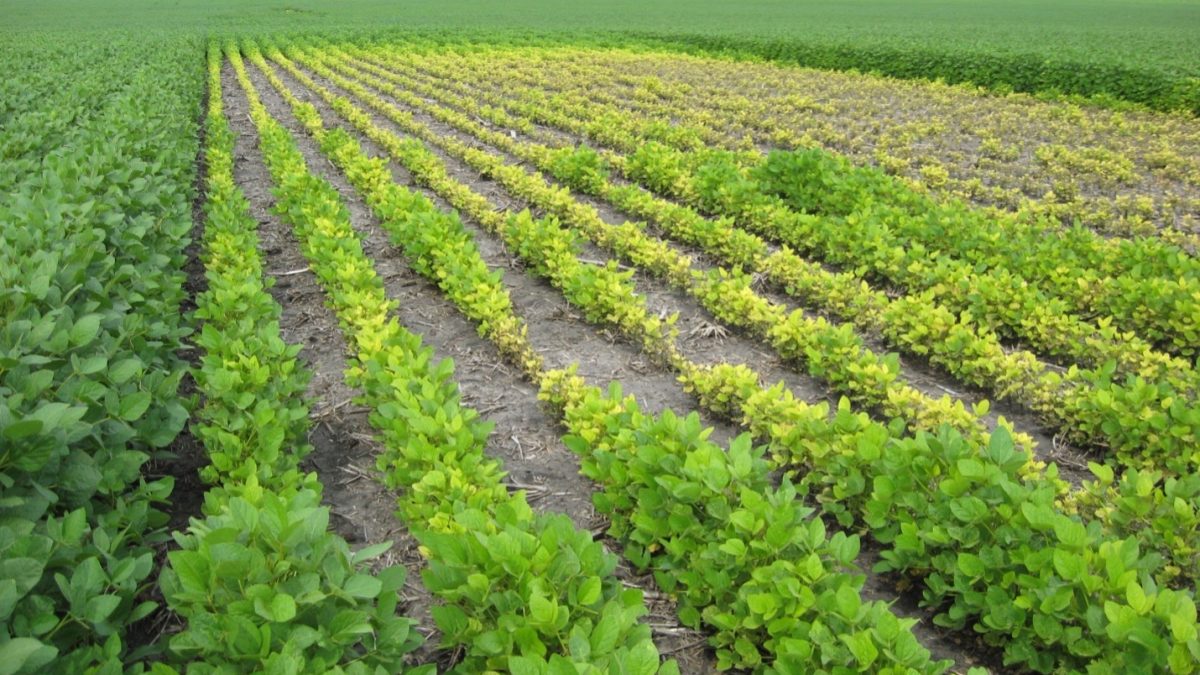Useful Steps to Prevent IDC Before You Plant Soybeans

It seems like every June and July I get called out to look at several fields that are a disaster because of IDC, (Iron Deficiency Chlorosis).
IDC occurs through a combination of weather conditions, variety selection or fields that simply should never be planted to soybeans. Other times, IDC could have been avoided with some fine tuning of farming practices.
There are five things you can do to combat IDC before you ever set foot in the planter:
- Test your soil
- Select the right genetics
- Adjust your planting population
- Plant at the right time
- Apply iron chelate products
Test Your Soil
Understanding your soil is step one. Soil carbonate and salinity levels are a key piece of information in determining how to proceed.
Notice I didn’t mention soil pH? I’ve seen gorgeous fields with pH’s over 8, or 10 bushel soybeans with a pH of 7. Focus on carbonates and salts. AgVise Laboratories has a great chart on risk potentials for different levels of each.
Also watch out for high nitrate carryover levels after a dry season in which corn was grown, like last year (2020).
Genetics, genetics, genetics.
The number one solution for growing a good crop? Genetics. Use data from multiple sources if possible. And since you followed step one, you know your soil risk factors and can determine the level of genetic protection you need.
This summer we will plant over 10,000 IDC plots under extreme soil conditions to rate our current line-up along with new varieties for 2022 and beyond. We also utilize NDSU trials and genetic supplier data for a 3-prong approach.
Plant Population
30” rows often show fewer IDC symptoms with a higher seeding rate. Increased planting population will also increase root mass which is also critical in defending against IDC.
Planting a higher population is an added expense but 30 bu/A versus 10 bu/A is some easy math to calculate. SHAMELESS PLUG ALERT: I’ll be showing some population effects later this summer to demonstrate this.
Planting Date
IDC usually shows up after the first trifoliate leaves emerge and can show up until the middle of July if wet conditions persist. In many years warm dry conditions can help push the crop past the susceptible period much quicker than cool and wet, keeping the plant actively growing.
Getting your soybeans up and out of the ground quickly and vigorously is important. Any stresses can add to IDC symptoms.
Iron Chelate Products
At $25 to $30 per acre, adding iron chelate products can be a tough pill to swallow. But I believe the added expense is well worth it for your toughest fields.
In-furrow application will give you the best results. Over–the–top foliar sprays have shown inconsistent ROI. There are now granular forms for use with an air seeder or premixed liquid for planters equipped with liquid fertilizer attachments.

Field with iron chelate treated soybeans on border. Non-treated soybeans in center.
These products can help if you’re managing multiple variables. For example, if you need to prioritize SCN or phytophthora over IDC, iron chelate can help give a boost to varieties that aren’t as strong on IDC.
Lastly, don’t be afraid to mix and match these practices. For that tough field, grab a top IDC variety and bump your seeding rate for added protection.
Stay tuned for a lot of great information later this summer from our fantastic IDC screening trials!



